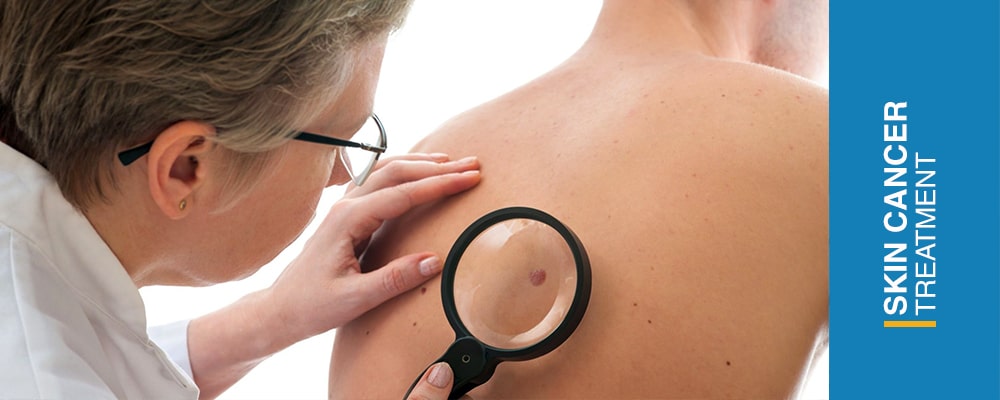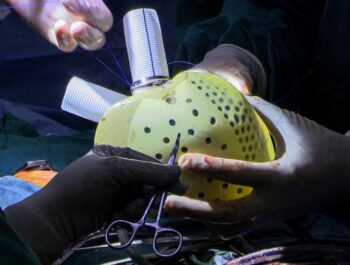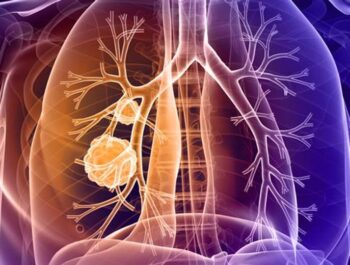
What is skin cancer?
8min ReadSkin cancer is an abnormal growth of skin cells. It generally develops in areas that are exposed to the sun, but it can also form in places that don’t normally get sun exposure. Nowadays skin cancer is one of the routine problems which can be caused by exposure too much in the sun.
Skin cancer types
Two main types of skin masses exist, keratinocyte carcinoma and melanoma. However, several other skin lesions are considered part of a larger skin cancer umbrella. Not all of these are, but they can become cancerous.
- Actinic keratosis: These red or pink patches of skin are not cancerous, but they’re considered a form of precancer. If left untreated, these skin masses may develop into squamous cell carcinoma.
- Basal cell carcinoma: The most common form of this cancer, basal cell carcinomas account for 90 percent of all cases of skin cancer. They’re slow-growing masses that most often show up on the head or neck.
- Squamous cell carcinoma: This type of cancer develops in the outer layers of your skin, and it’s typically more aggressive than basal cell carcinoma. It may show up as red, scaly lesions on your skin.
- Melanoma: This type of cancer is less common, but it’s the most dangerous type of skin cancer. In fact, melanoma makes up just one percent of skin cancers, but it causes the majority of skin cancer-related deaths each year. Melanoma forms in the melanocytes, the skin cells that create pigment.
Symptoms
Different types of this cancer aren’t all identical, and they may not cause many symptoms. Still, unusual changes to your skin can be a warning sign for the different types of cancer. Being alert for changes to your skin may help you get a diagnosis earlier. Watch out for symptoms, including:
- Skin lesions: A new mole, unusual growth, bump, sore, scaly patch, or dark spot develops and doesn’t go away.
- Asymmetry: The two halves of the lesion or mole aren’t even or identical.
- Border: The lesions have ragged, uneven edges.
- Color: The spot has an unusual color, such as white, pink, black, blue, or red.
- Diameter: The spot is larger than one-quarter inch, or about the size of a pencil eraser.
- Evolving: You can detect that the mole is changing size, color, or shape.
Causes
Both types of this disease occur when mutations develop in the DNA of your skin cells. These mutations cause skin cells to grow uncontrollably and form a mass of cancer cells.
- Basal cell skin cancer is caused by ultraviolet (UV) rays from the sun or tanning beds. UV rays can damage the DNA inside your skin cells, causing the unusual cell growth. Squamous cell skin cancer is also caused by UV exposure.
- Squamous cell skin cancer can also develop after long-term exposure to cancer-causing chemicals. It can develop within a burn scar or ulcer, and may also be caused by some types of human papillomavirus (HPV).
- The cause of melanoma is unclear. Most moles don’t turn into melanomas, and researchers aren’t sure why some do. Like basal and squamous cell skin cancers, melanoma can be caused by UV rays. But melanomas can develop in parts of your body that aren’t typically exposed to sunlight.
Diagnosis
If you develop suspicious spots or growths on your skin, or you notice changes in existing spots or growths, make an appointment with your doctor. You doctor will examine your skin or refer you to a specialist for diagnosis. Your doctor or specialist will likely examine the shape, size, color, and texture of the suspicious area on your skin. They will also check for scaling, bleeding, or dry patches. If your doctor suspects it might be cancerous, they may perform a biopsy.
During this safe and simple procedure, they will remove the suspicious area or a portion of it to send to a lab for testing. This can help them learn if you have skin cancer. If you’re diagnosed with this disease, you may need additional tests to learn how far it has progressed. Your recommended treatment plan will depend on the type and stage of your cancer, as well as other factors.
Skin cancer stages
To determine a skin cancer’s stage or severity, your doctor will factor in how large the tumor is, if it has spread to your lymph nodes, and if it has spread to other parts of the body. This cancer are divided into two primary groups for staging purposes: nonmelanoma and melanoma.
Nonmelanoma skin cancers include basal cell and squamous cell cancers.
- Stage 0: The abnormal cells have not spread beyond the outermost layer of skin, the epidermis.
- Stage I: The cancer may have spread to the next layer of skin, the dermis, but it is no longer than two centimeters.
- Stage II: The tumor is larger than two centimeters, but it has not spread to nearby sites or lymph nodes.
- Stage III: The cancer has spread from the primary tumor to nearby tissue or bone, and it is larger than three centimeters.
- Stage IV: The cancer has spread beyond the primary tumor site to lymph nodes and bone or tissue. The tumor is also larger than three centimeters.
Melanoma stages include:
- Stage 0: This noninvasive type of skin cancer has not penetrated below the epidermis.
- Stage I: The cancer may have spread to the second layer of skin, the dermis, but it remains small.
- Stage II: The cancer has not spread beyond the original tumor site, but it is larger, thicker, and may have other signs or symptoms. These include scaling, bleeding, or flaking.
- Stage III: The cancer has spread or metastasized to your lymph nodes or to nearby skin or tissue.
- Stage IV: The most advanced stage of melanoma. Stage IV is an indication the cancer has spread beyond the primary tumor and is showing up in lymph nodes, organs, or tissue distant from the original site.
When cancer comes back after treatment, it’s called recurrent skin cancer. Anyone who has been diagnosed with and treated for this cancer is at risk for a recurrence of the cancer. That makes follow-up care and self-examinations even more important.
Risk factors
Fair skin
Anyone, regardless of skin color, can get this cancer. However, having less pigment (melanin) in your skin provides less protection from damaging UV radiation. If you have blond or red hair and light-colored eyes, and you freckle or sunburn easily, you’re much more likely to develop this disease than is a person with darker skin.
A history of sunburns
Having had one or more blistering sunburns as a child or teenager increases your risk of developing skin cancer as an adult. Sunburns in adulthood also are a risk factor.
Excessive sun exposure
Anyone who spends considerable time in the sun may develop this disease, especially if the skin isn’t protected by sunscreen or clothing. Tanning, including exposure to tanning lamps and beds, also puts you at risk. A tan is your skin’s injury response to excessive UV radiation.
Sunny or high-altitude climates
People who live in sunny, warm climates are exposed to more sunlight than are people who live in colder climates. Living at higher elevations, where the sunlight is strongest, also exposes you to more radiation.
Abnormal moles
People who have many moles or abnormal moles called dysplastic nevi are at increased risk of skin cancer. These abnormal moles — which look irregular and are generally larger than normal moles — are more likely than others to become cancerous. If you have a history of abnormal moles, watch them regularly for changes.
Precancerous skin lesions
Having skin lesions known as actinic keratoses can increase your risk of developing this cancer. These precancerous skin growths typically appear as rough, scaly patches that range in color from brown to dark pink. They’re most common on the face, head and hands of fair-skinned people whose skin has been sun damaged.
A family history of skin cancer
If one of your parents or a sibling has had this cancer, you may have an increased risk of the disease.
A personal history of skin cancer
If you developed this cancer once, you’re at risk of developing it again.
A weakened immune system
People with weakened immune systems have a greater risk of developing this disease. This includes people living with HIV/AIDS and those taking immunosuppressant drugs after an organ transplant.
Exposure to radiation
People who received radiation treatment for skin conditions such as eczema and acne may have an increased risk of this disease, particularly basal cell carcinoma.
Exposure to certain substances
Exposure to certain substances, such as arsenic, may increase your risk of skin cancer.
Preventing
To lower your risk of getting this disease, avoid exposing your skin to sunlight and other sources of UV radiation for extended periods of time. For example:
- Avoid tanning beds and sun lamps.
- Avoid direct sun exposure when the sun is strongest, from 10 a.m. to 4 p.m., by staying indoors or in the shade during those times.
- Apply sunscreen and lip balm with a sun protection factor (SPF) of 30 or higher to any exposed skin at least 30 minutes before heading outdoors and reapply regularly.
- Wear a wide-brimmed hat and dry, dark, tightly woven fabrics when you’re outside during daylight hours.
- Wear sunglasses that offer 100 percent UVB and UVA protection.
It’s also important to regularly examine your skin for changes like new growths or spots. Tell your doctor if you notice anything suspicious.
Types of doctors who treat skin cancer
If you’re diagnosed with this cancer, your doctor may assemble a team of specialists to help address different aspects of your condition. For example, your team may include one or more of the following:
- a dermatologist who treats skin diseases
- a surgical oncologist who treats cancer using surgery
- a radiation oncologist who treats cancer using radiation therapy
- a medical oncologist who treats cancer using targeted therapy, immunotherapy, chemotherapy, or other medications













Reviews
Number of pending reviews174